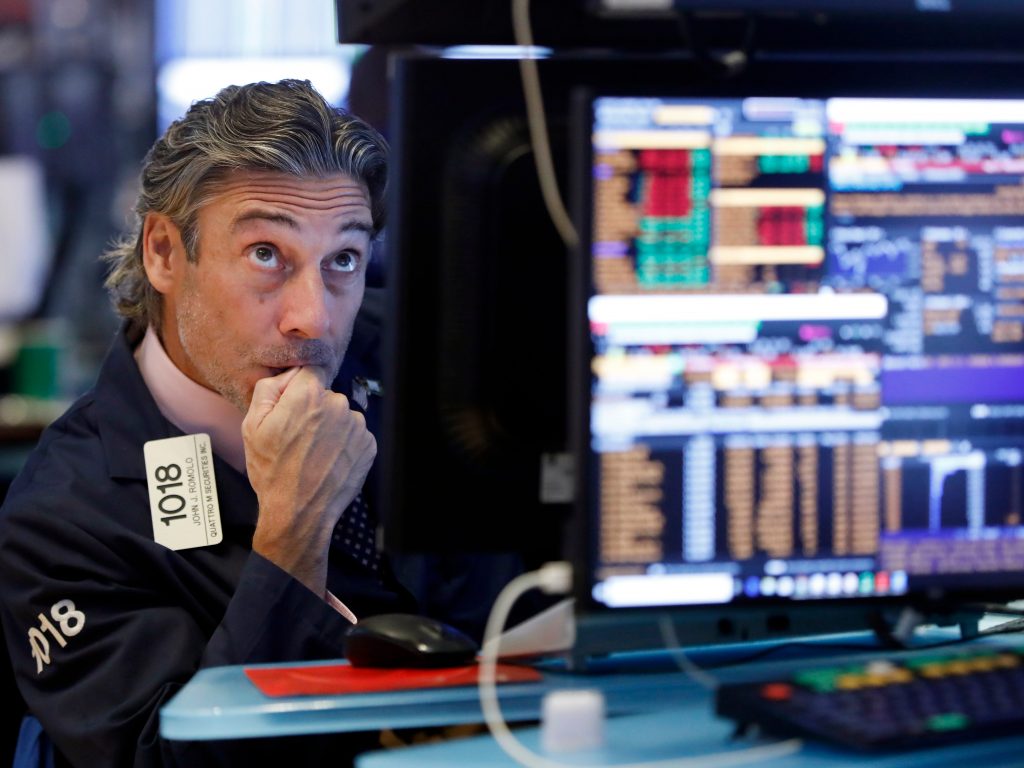- US futures rose on Friday ahead of the monthly jobs report that is expected to show the labor market expanded in March.
- After a volatile first quarter, US indexes closed out the month of March with solid gains.
- Oil prices pared Thursday's losses ahead of an emergency meeting of the International Energy Agency.
US stock futures edged up on Friday ahead of the release of the all-important monthly employment report later in the day, while crude oil pared earlier losses as Western leaders gathered to discuss a possible release of stockpiles.
S&P 500 futures were up 0.41% and Nasdaq 100 futures had risen 0.44%, while Dow Jones futures rose 0.39%. The S&P 500 gained 3.6% in March, its biggest monthly rise since December, while the Nasdaq 100 rose 4.2%, its largest one-month increase since last October. The indices all posted losses in the first quarter, with the S&P down almost 5% and the Nasdaq 100 down nearly 10%.
Non-farm payrolls come out at 8:30am ET on Friday and the result of these will dictate the performance of most asset classes ahead of the weekend. Economists expect 490,000 workers to have been added to non-farm payrolls in March.
"Such a pace of jobs growth should push unemployment to a new cycle low of 3.7%, while also exerting upward pressure on earnings to the tune of 0.4% month on month," Michael Brown, Head of Market Intelligence at Caxton said on Friday.
Oil edged up on Friday, paring some of the previous day's losses after President Joe Biden announced that he had sanctioned the release of as much as 180 million barrels from the US's strategic reserves in a bid to tame sky-high gas prices and inflation. Other Western nations may do the same. The International Energy Agency was holding an emergency meeting to explore the possiblity of a joint release of reserves, particularly if supply from Russia should drop.
By Friday morning in Europe, Brent crude was up 0.6% at around $105.12 a barrel, while West Texas Intermediate was up 0.1% at around $100.40. Both contracts fell by 7% the previous day.
"The US SPR release should be enough to cap oil prices now, unless the Eastern European situation deteriorates markedly. Conversely, if Venezuelan and/or Iranian oil is allowed to return to the official international market, in combination with OPEC+ hikes and the SPR release, I would confidently say we have seen the highs in oil," Jeffrey Halley, senior market analyst at Oanda wrote.
European natural gas prices fell, despite Vladimir Putin's threat to cut off supply to the region unless buyers made payment rubles. Benchmark Dutch gas futures were down 2.5% on the day, while UK gas fell 3%, indicating traders attached little possibility to a supply disruption actually materializing.
Germany dismissed Putin's demands as blackmail, as economy minister Robert Habeck said his country, which relies on Russian gas for about three-quarter of its consumption, was prepared for all scenarios, including the supply of Russian gas being stopped. Chancellor Olaf Scholz later added Germany will continue to pay for Russian gas in euros and dollars.
Finally, cryptocurrencies kicked off April in the red after clocking several weeks of gains after a quiet start to the year. Bitcoin was down 4.57% trading at $45,140.36 while its closest rival, ethereum, lost 3.79% to trade at $3,281.98. Both coins remain up over the past seven days, 2.63% and 5% respectively.
